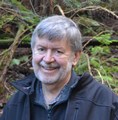Towards Watershed Sustainability: BC's new Water Sustainability Act addresses seven policy areas (Provincial Driver #1 in 2014)

Looking into the future, collaboratively developed Water Sustainability Plans can integrate water and land use planning and can be combined with other local, regional or provincial planning processes to address water-related issues. “The scale and scope of each plan – and the process used to develop it – would be unique, and would reflect the needs and interests of the watersheds affected,” states Jennifer Vigano.










